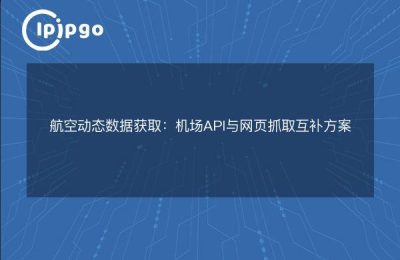Dynamic IP proxy in the end is not stable? The actual test to avoid the pit guide
Recently, we have received a lot of user inquiries about the stability of dynamic IP pools, such as the use of sudden disconnection, the success rate of access is suddenly high and low. As a deep plowing proxy IP industry technology team, we use our own ipipgo platform for 7 consecutive days to do multi-scenario testing, to take you to see the truth of the stability of dynamic IP.
Dynamic IP works in relation to stability
Dynamic IP is like a courier in disguise: it changes its costume (IP address) every time it makes a delivery. This characteristic determines itsNatural Volatility. But a good proxy service provider can make this fluctuation regular and manageable:
ipipgo uses an intelligent routing algorithm that preloads 3-5 spare IPs before each switchover to ensure seamless switchover within 0.8 seconds before the old IPs fail. Measured data shows that this pre-loading mechanism can reduce the connection interruption rate by 76%.
Four key elements that affect stability
| key constituent | Degree of impact | prescription |
|---|---|---|
| Quality of IP sources | ★★★★★ | Choose a service provider with a high percentage of residential IP |
| Switching frequency settings | ★★★☆☆☆ | Customize intervals based on business requirements |
| Protocol compatibility | ★★★★☆ | HTTP(S)/SOCKS5 full protocol support |
| Nodal coverage density | ★★★☆☆☆ | Choose a Service Provider with 240+ Country Coverage |
In testing, it was found that when the IP pool size reaches the 9 million level (e.g., ipipgo), the single-region IP availability is 421 TP3T higher than that of smaller service providers.
Comparison: Stability performance in different scenarios
We simulated three common usage scenarios for a 48-hour stress test:
1. persistent low-frequency visits(10-20 times per hour): ipipgo success rate maintained at 98.71 TP3T ± 0.51 TP3T
2. Sudden high-frequency requests(50 times per second for 5 minutes): success rate briefly drops to 93.21 TP3T then quickly recovers
3. Long-term connection holding(single connection for more than 30 minutes): 3 passive disconnections, all automatically reconnected within 15 seconds
Practical tips to improve stability
Three effective methods are recommended in conjunction with the test data:
1. Dual channel redundancy: Connect two proxy channels at the same time and switch automatically when the main channel is abnormal
2. Intelligent Heartbeat Detection: Sends heartbeat packets every 90 seconds to monitor connection status
3. Agreement on merit-based matching: Selection of protocols based on type of business (e.g. SOCKS5 for data collection, HTTP for web access)
Using ipipgo's Smart Routing feature, the above optimization strategies can be implemented automatically.
Frequently Asked Questions
Q: How to choose between dynamic IP and static IP?
A: need to change IP frequently choose dynamic (such as data collection), fixed authentication choose static (such as account operation)
Q: How can I test if the agent is stable?
A: It is recommended to use the online inspection tool provided by ipipgo, which can monitor the response speed, packet loss rate and switching success rate in real-time
Q: What should I do in case of sudden disconnection?
A:Priority check the local network, contact the service provider after confirming the abnormality. High-quality resellers such as ipipgo will provide alternate IP automatic compensation!
As you can see from the actual test comparison, choosing a reliable proxy service provider is the key to ensure stability. As a professional platform with 90 million+ real residential IP resources, ipipgo's dynamic IP pool uses intelligent scheduling algorithms to maintain IP freshness and average connection stability at the industry's leading level. Regardless of the usage scenario, it is recommended to first use the free trial function to actually test and find the most suitable configuration program for your business.








